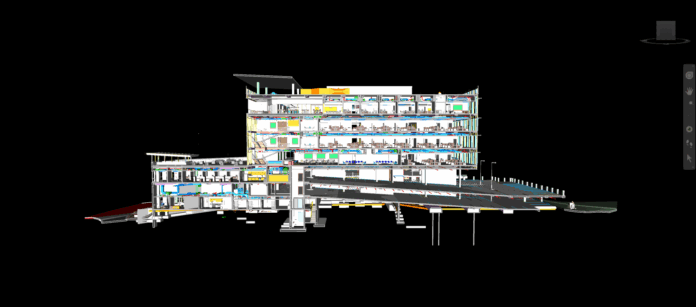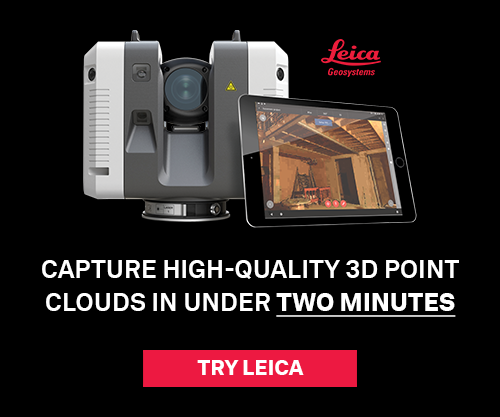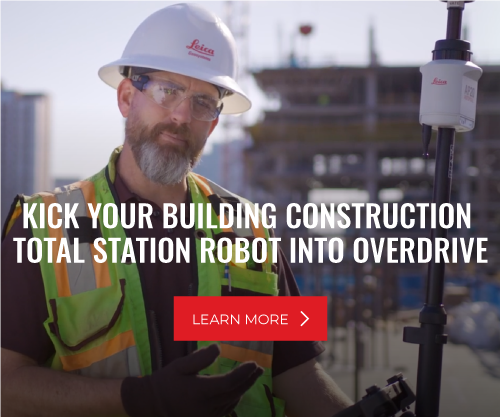Construction innovation may begin with adopting new tools, but it shouldn’t stop there.
It’s how you use digital construction technologies together in smarter, more collaborative ways that creates the biggest impact, and Greenville, S.C.-based Harper General Contractors is doing just that.
By combining advanced tools such as robotic total stations, laser scanners, and drones, Harper has streamlined workflows, improved accuracy, and fostered stronger relationships with trade partners.
The result? Better project outcomes, fewer delays, and significant cost savings.
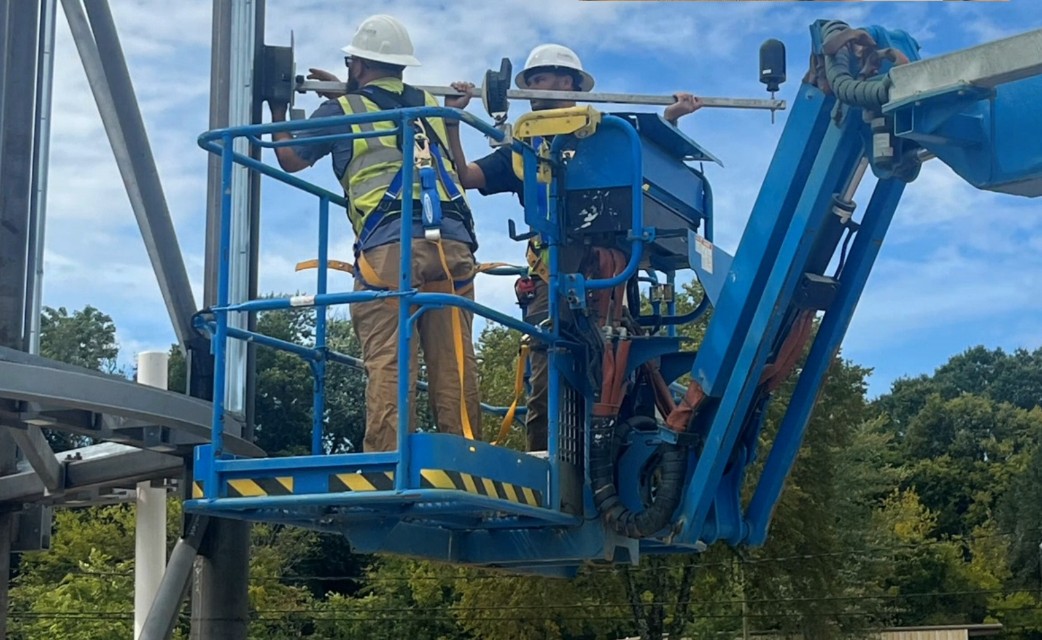
On a recent episode of the Leica Tech Insider podcast, Harper shared their approach for combining digital construction technologies across teams, integrating workflows, and collaborating with trades to deliver measurable results.
Here are their tips.
1. Cross-Train Your Team to Add Flexibility
Harper is a family-owned general contractor serving the Southeast with about $400 million in annual revenue. As a regional mid-size multidisciplinary firm, they have learned to work with the internal resources they have.
Instead of relying on specialized teams for each technology, Harper cross-trains their staff to be skilled in multiple tools, making them more agile and efficient.
“We don’t have massive reality capture or layout teams,” says Jordan Chandler, Harper’s construction technology director. “We have a team of 12 that wears a lot of hats. Our scanning champion can also operate a total station and a drone.”
That flexibility means Harper doesn’t have to send multiple teams to a job site each time they need data.
Field teams are also trained to operate laser scanners on-site, which decreases the need for the virtual design and construction (VDC) team’s involvement and helps keep projects on track.
“We don’t have massive reality capture or layout teams. We have a small team that wears a lot of hats.”
Harper saw the benefits of this first-hand during their construction of the 12-story Thomas and Vivian A. Wong Honor Tower in Greenville’s Unity Park, which required precise verification at each installation stage of the tower’s dual-helical staircase.
The striking design of the memorial features 22 sets of winding stairs, surrounded by an independent exoskeleton structure clad with aluminum panels and mounted on a concrete column foundation. The stairs are connected by 20 landings, all of which had to align perfectly with the as-built bracket positions for attachment to the tower’s inner core.
Due to its complex geometry and towering height, along with wind conditions, traditional methods using a ground-based terrestrial laser scanner were not practical. The team chose to attach a Leica BLK360 laser scanner to the inner core at multiple locations on each floor to record the bracket positions for smooth installation, which required repeatedly moving the scanner.
“Being able to train the field team really paid off here, because they were able to unbolt it, rebolt it, and then perform most of the scanning without having our VDC team tied up for several days outside,” Chandler says.
Chandler notes that cross-training teams on tools benefits both sides. Since most of the VDC team also knows how to operate total stations (Harper uses Leica iCON technology for its ease of use, consistent performance, and dependability), they can develop their workflows and processes with an understanding of how everything affects their field services team.
“We’ve realized a lot of benefits from having people cross-train and be capable of using different pieces of equipment to solve whatever problem they’re trying to solve,” Chandler says.
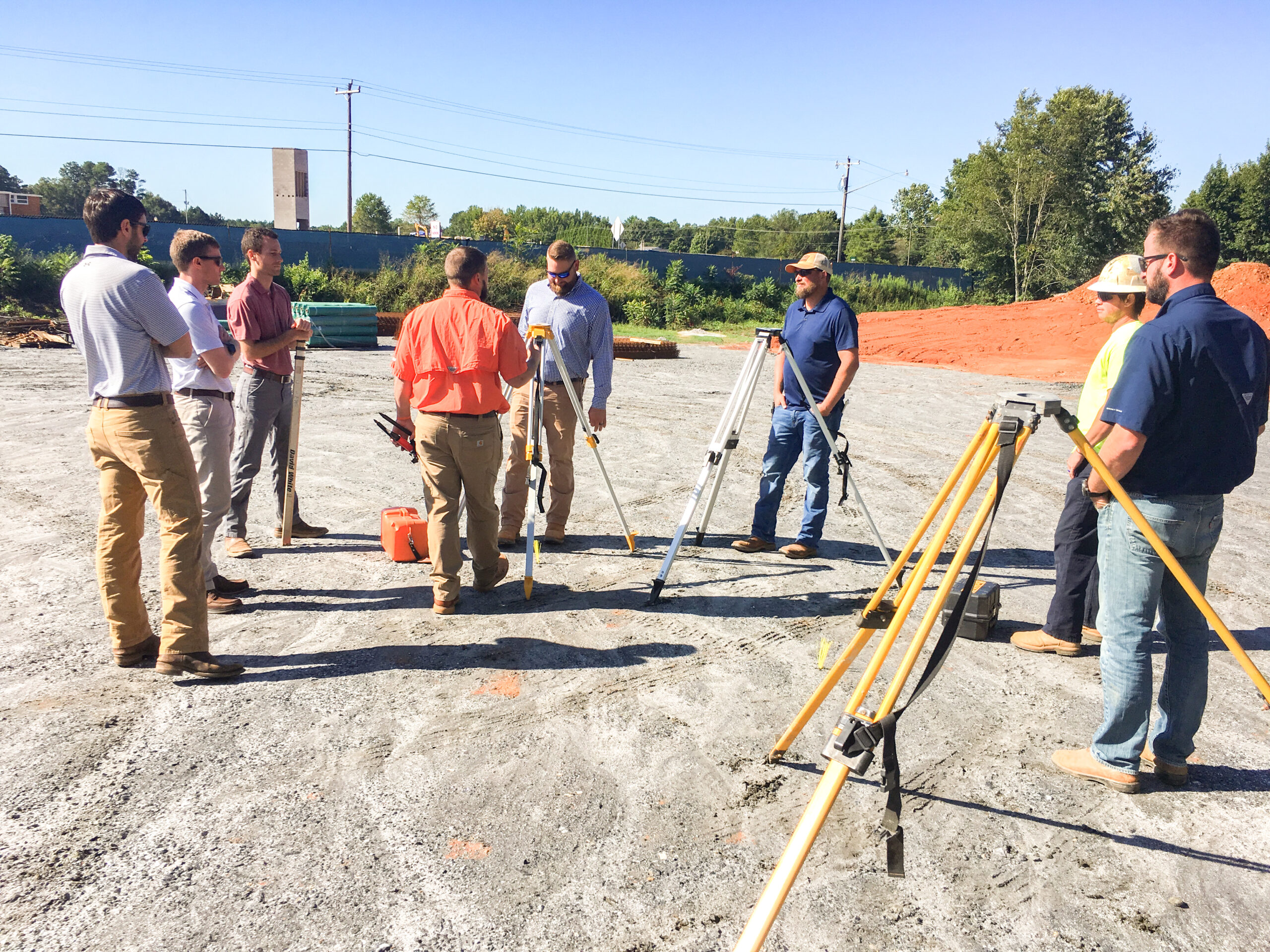
2. Integrate Your Workflows with the Full Picture in Mind
Another way Harper leverages the power of collaboration is by integrating data from various technologies into a unified, comprehensive workflow.
By overlaying data from drones, total stations, and laser scanners, Harper gains a complete view of project conditions, which minimizes discrepancies and improves decision-making.
For example, during the greenfield construction of a high school in Fountain Inn, S.C., Harper used drones to monitor earthwork, laser scanners for precise measurements, and total stations to manage control systems on the more than 60-acre site.
“That was the first time that I was able to efficiently and effectively display on a large scale the value of everything,” Chandler says. “Whether you’re scanning, using drones, using total stations — all that data — just being able to overlay it and have it all line up gives you benefits from seeing everything together visually.”
That visual clarity backed by the data made conversations with trade partners, especially around change orders, much easier, Chandler says.
Instead of going back and forth and engaging in finger-pointing, you can simply present the data to them to have a truly effective conversation,” he says.
“Whether you’re scanning, using drones, using total stations — all that data — just being able to overlay it and have it all line up gives you benefits from seeing everything together visually.”
Another example occurred during a renovation project as part of the Peace Center campus expansion in Greenville. The team combined scanning and total station data to reveal underground ductwork in a building over 100 years old.
By tying the scan data to the building’s control system, Harper was able to map the ductwork’s exact location.
“There’s not a lot of ways that you can go solve that problem without utilizing total stations to collect controls, targets, and then the scanner to pull in the data,” Chandler says.
Harper then added the ductwork location to the floor plan so project stakeholders knew where it was relative to the rest of the building’s structural elements, helping to prevent damage and costly rework during the renovation.
3. Share Your Data and Tools to Strengthen Relationships with Trade Partners
Harper’s collaborative mindset extends beyond its internal teams to its trade partners.
By sharing data and workflows, Chandler says Harper has helped specialty contractors adopt new technologies that improve efficiency and foster continued innovation.
During the Honor Tower project at Unity Park, Harper collaborated closely with the stair fabricator to incorporate their laser scanning data into the design software to make tolerance adjustments as needed.
“We were able to work together to help streamline some of that verification with the brackets,” says Eric Dewyea, Harper’s senior VDC coordinator.
This process of navigating the data in tandem allowed the stairs to be installed in just two weeks — despite the project’s complexities and high threshold for precision.
“The scan data and advanced planning led to that success,” Dewyea says.
“High-accuracy data builds trust. Pulling all those things together allows us to solve complex problems, which creates strong partnerships between us, our trade partners, and our field teams.”
It also allowed Harper’s team to demonstrate the accuracy of the data and build confidence with their trade partner in its reliability. In fact, the fabricator was so impressed, they purchased their own Leica BLK360 laser scanner following the project.
“High-accuracy data builds trust,” Chandler says. “Pulling all those things together allows us to solve complex problems, which creates strong partnerships between us, our trade partners, and our field teams.”
4. Lead with Collaboration to Secure Tangible ROI
Harper’s success shows that the real value of construction technology depends on how it’s applied. By effectively integrating digital construction tools, they’ve managed to avoid change orders, rework, and delays while reaching their project goals.
Take the Unity Park Honor Tower, where scan data verified the fit of the prefabricated stair pieces prior to installation, thereby preventing major problems from occurring on-site.
“There were significant savings in the end,” Chandler says.
Collaborative data can also help eliminate lengthy (and often costly) disputes among internal teams and trade partners about responsibilities or who is at fault when errors happen.
“Being able to use the technology in that environment where you’re overlapping drone data, total station data, scan data — you kind of let the data talk,” Chandler says. “That’s a big deal, because it can save a lot of money.”
“We get into some challenging job sites, and the Leica equipment just delivers. That’s what we’re looking for.”
He says their technology choices have also been important to their collaborative approach.
“We get into some challenging job sites, and the Leica equipment just delivers,” Chandler says. “That’s what we’re looking for.”
As they continue to grow and expand their teams and resources, Harper intends to maintain this collaborative approach because it has consistently proven to generate returns when adopting new construction technologies.
“We really want to be good stewards of our company and maximize the value that we’re getting out of the technologies and the things that we’re investing in,” Chandler says.



